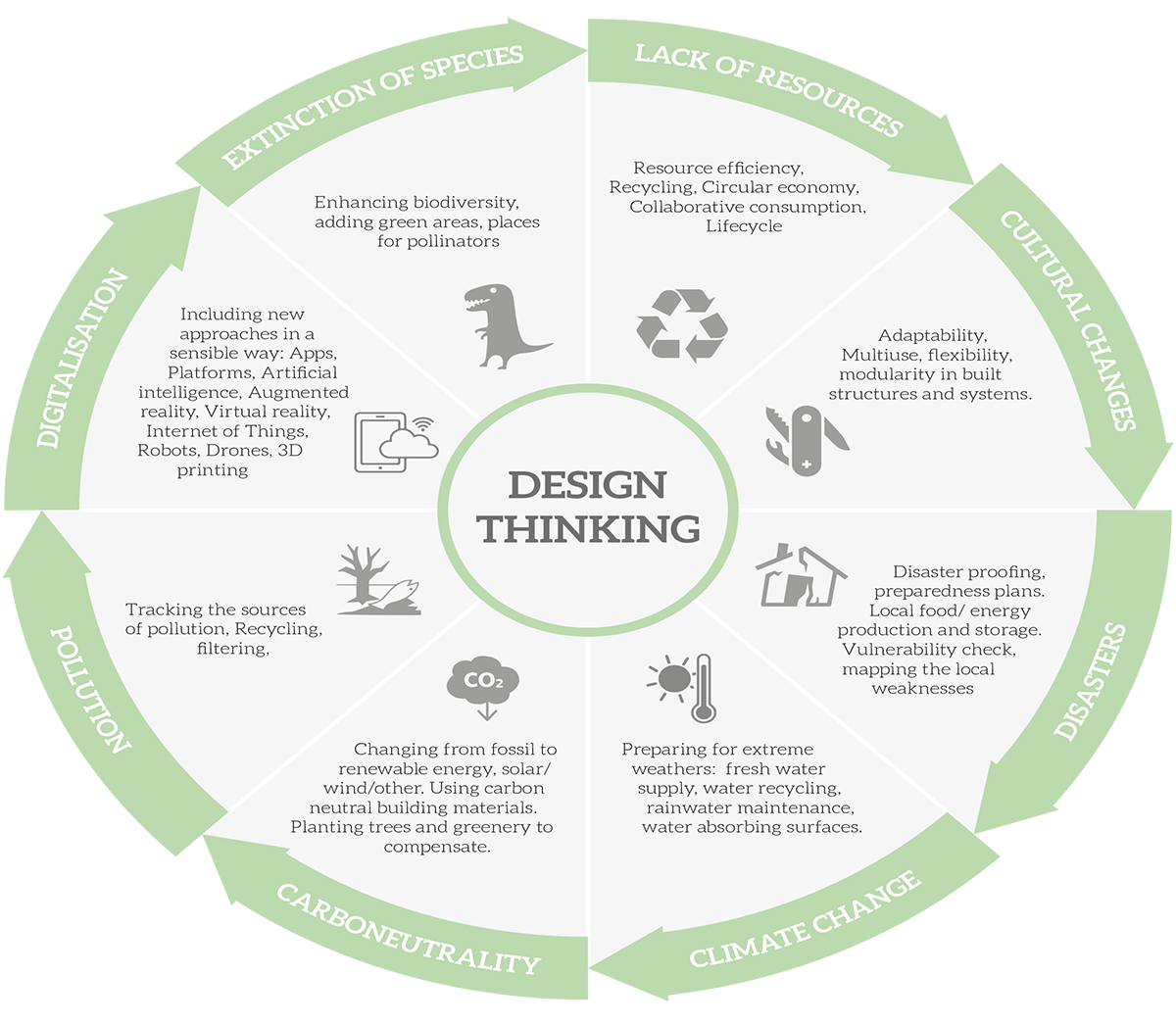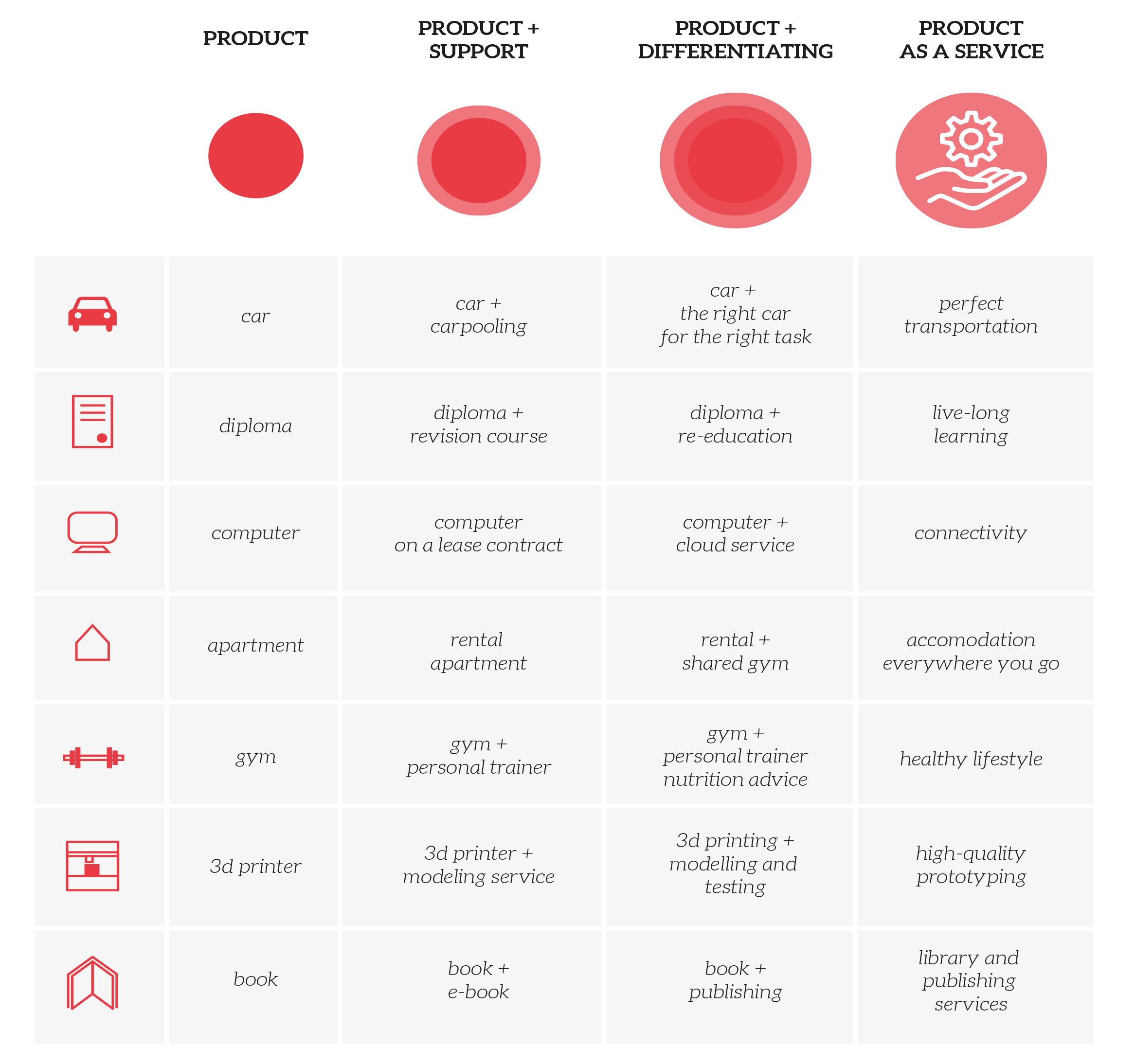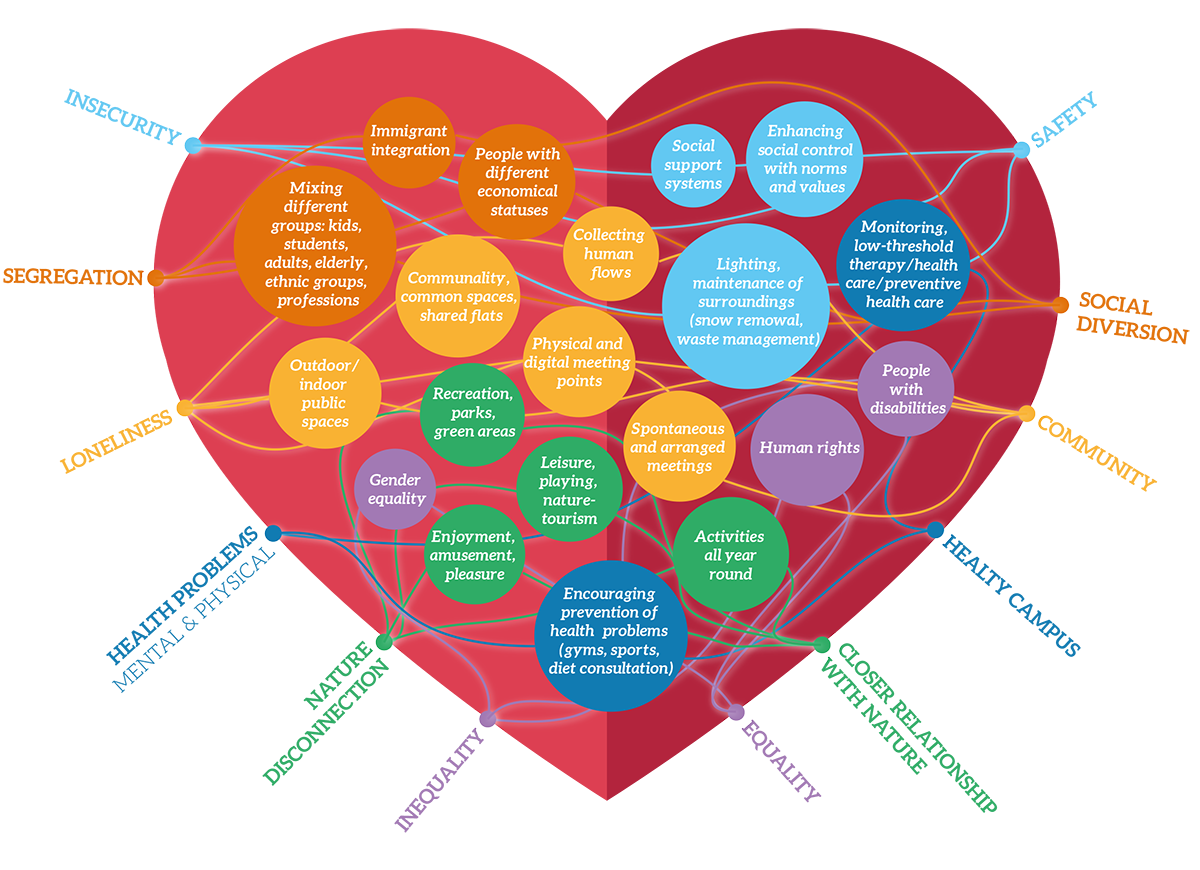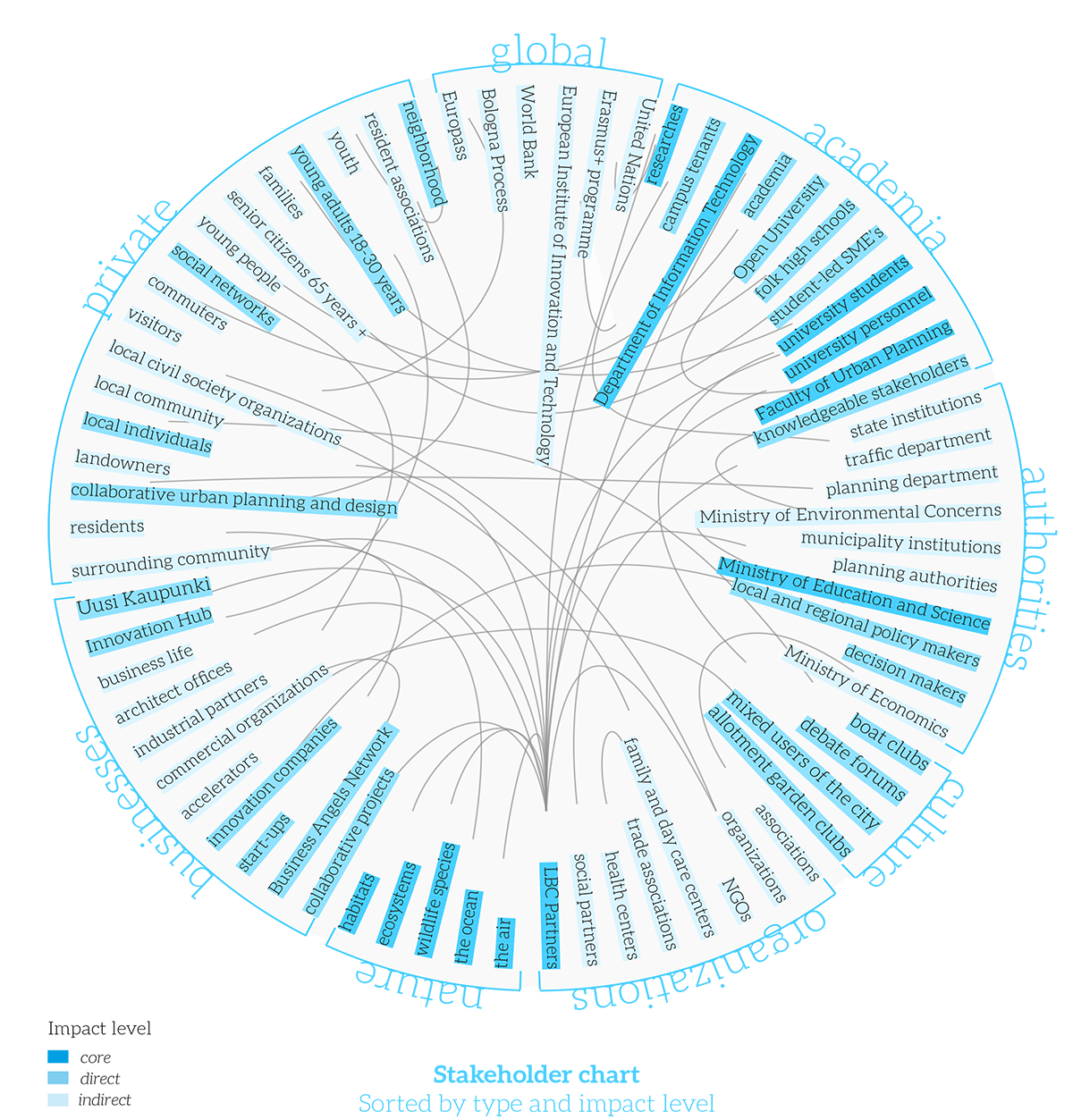Development Ideas Book & Core Themes for Campus Development
Working together to explore the participatory design methods for campuses while simultaneously conducting local pilots in the six Live Baltic Campus partner cities has produced a multitude of outputs and insights. A data analysis of the material produced in the pilot cases has led to the identification of 44 sub-themes, which in turn were grouped into six core themes. Together, the themes form a holistic take on important issues in understanding both how more sustainable and inviting campuses can be created, and how they can inspire more sustainable urban development overall. The themes are presented below and described in more detail together with the process in the Live Baltic Campus Development Ideas Book.
City
Symbiosis. What can the city provide the campus and what can the campus give to the city.
The Core Theme City handles the campus in its wide context with the surrounding city and region. Accessibility and connectivity are key aspects in intertwining the campus and the urban structure. Time and resources used in commuting have a significant effect on happiness and ecological sustainability. The surrounding city sets limitations to campus development with its existing buildings, infrastructure and nature. At the same time, however, it enables a unique identity, various opportunities and positive effects on the neighborhood.
LBC Forerunner – Tartu embraces the location
As the Tartu campus is split between the Old Town and the Maarjamõisa campus, the University has understood that the location of its functions is very important. Tartu University is tracking the flow of users to be able to predict the right location of future buildings. This is the opposite to the traditional approach where buildings are placed wherever real estate conditions are right and users have to go to the buildings. By understanding the location of their users, they can bring the real estate closer to the user. This will lead to a better usage of the premises, higher efficiency and ultimately, better education.
Change
 Embrace the change, prepare, adapt and find sustainable opportunities in it!
Embrace the change, prepare, adapt and find sustainable opportunities in it!
In a modern society, change is constant when it comes to digitalization, the climate and economic and social aspects, among other things. Structures and systems, both physical and mental, need to be adaptable and flexible in order to advance resilience. Resilience is the key to tackling the obstacles of the unknown future. The concept of resilience refers to the capacity of a system to recover after change while maintaining its basic functions. It also relates to changes in systems and can inform on how the changes, whether social or ecological, relate to sustainability.
LBC Forerunner – Stockholm builds a sustainable campus
Campus Albano is a true forerunner in building a sustainable campus and a absolute guiding star in representing the Core Theme Change. The Albano plan is a comprehensive example of socio-ecological urban planning that springs from long-term empirical and scientific studies in both ecology and architecture. Campus Albano represents a scientific environment that can be used as a test bed for solutions that will later be exported to other campuses and cities. Sustainable urban development in case Albano consists of three spatial concepts: Green Arteries, Active Ground and Performative Buildings. Albano Resilient Campus concentrates on change, adaptation and ongoing development.
Service
Make the campus a 24/7 service! Produce services from knowledge – to serve knowledge!
Services include study-related student services, infrastructure that supports learning and free-time functions for students, staff, locals and passers-by. A vast range of services provides food for the mind and body, enjoyment, exercise and round-the-clock life on the campus. The local community can also function as a testbed for student service innovations and produce services and activities for the campus.
LBC Forerunner – Turku aims to understand the user
The University of Turku occupies both old and new buildings. As education is constantly developing, there has always been the question whether premises should change accordingly. By looking at the campus as a service, the University of Turku has found a new approach where the campus is able to change from within. The crux was understanding the user of the service and aspects that add value for the user. Continuous feedback and letting the user shape the service can lead to a higher efficiency between supply and demand. Hybrid spaces and time planning between different services created a more efficient use of the premises and a vibrant student life.
Heart
Recreation, meeting, sharing and caring are the key to a socially sustainable campus.
People are the basis of every community and they form the core of the campus. Keeping in touch via new digital media does not diminish the importance of face-to-face meetings. The campus has to enable both organized and spontaneous gatherings, for small groups of friends and the entire academia, were it information-packed lectures or reckless student parties.
LBC Forerunner – Uppsala introduces Kollaboratoriet
Kollaboratoriet Uppsala is a low-threshold meeting place for the academia and civil society, art and science, innovation and action. The physical space is located in the central city of Uppsala and is designed as a flexible multi-use space. The space is a platform for coming together, enhancing possibilities, and generating transdisciplinary conversation on different topics. Kollaboratoriet has hosted for example a public conversation on climate change, theater performances and innovation days. Kollaboratoriet is an inviting venue bringing people together around the same table to meet, discuss and work together for a better world.
Bloom
From ecology to economy. Cultivate, nourish, and boost it and it will flourish!
The campus is a place for distributing knowledge, accelerating local economy and leading the way for sustainable life. The campus is a place for open-minded and fearless innovation that will benefit the society. Generating new business and innovation thrives from finding solutions to current challenges, including sustainable ecological development.
LBC Forerunner – Helsinki wants to be a testbed
In the Helsinki area, there is an ongoing process of restructuring from 20 to 4 campus locations. Placing a new campus in Myllypuro in eastern Helsinki is a conscious political decision by the City of Helsinki. Helsinki wants to be a testbed for new innovations, and the city sees the campus as a vitalizing boost for the local area and the city. The expectations for the campus’ impact on economic development are high, and the City of Helsinki and Metropolia UAS have collaborated in creating a plan to enhance the positive effects of the future Myllypuro campus for its surroundings, especially concerning the aspects of economical and social sustainability.
Together
Find balance in extensive collaboration. Involve people and communities with diverse backgrounds, needs and interests!
The Core Theme Together is about collaboration on multiple levels. On campus, it means cross-disciplinary studies, student-staff collaboration, international programs and global liaison and involving the local community and businesses in learning and innovation processes. Coming together is effective and creates synergy.
LBC Forerunner – Riga generates a cooperative interplay
The University of Latvia has started a process to concentrate all its study and research activity in the Tornakalns area. The University counts on this new centralized campus structure to generate an interplay between students and researchers and to create a critical mass effect of human and material resources. The construction of the new campus will breathe new life both into the Tornakalns neighborhood and into Riga as a whole. With the development in Tornakalns, a new cooperation model for urban planning will be introduced. Landowners, entrepreneurs, residents, urban planners and architects will all be involved in the process in order to create a common vision for developing this area in the coming years.












